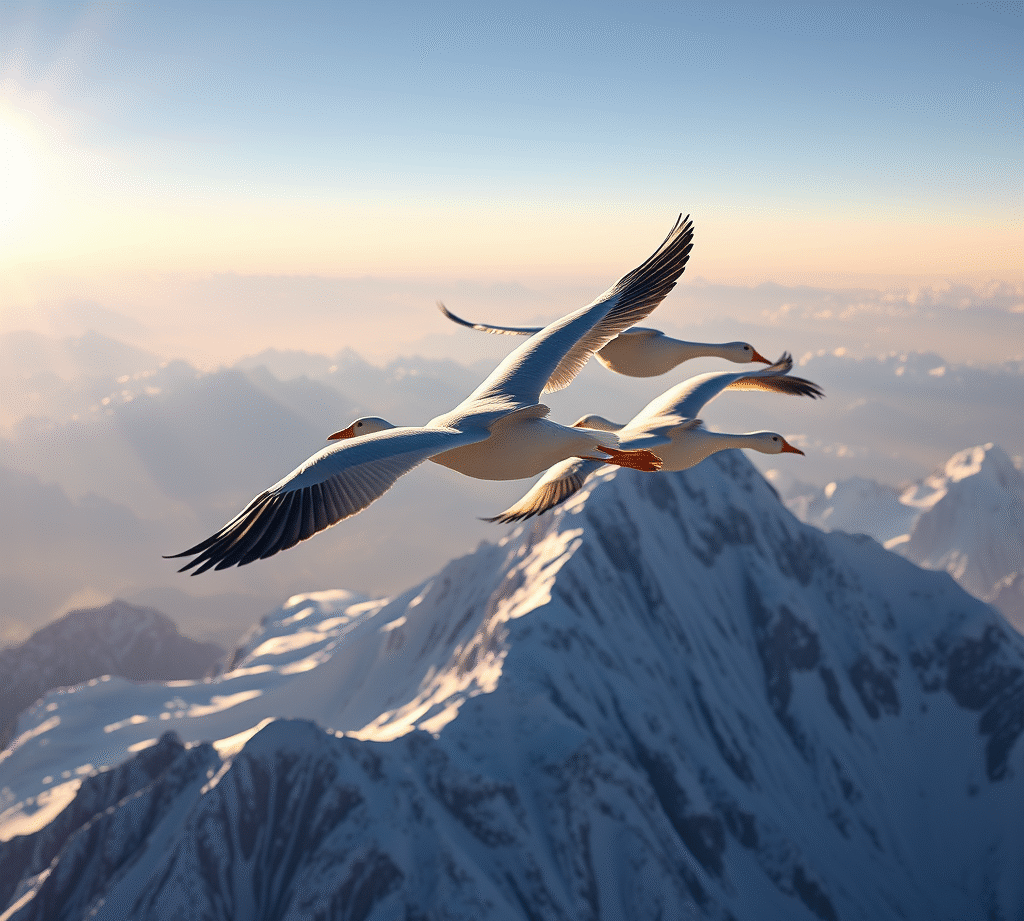Ultimate Guide to Bird‑watching Across the Indian Sub‑continent
1. Why Fly with a Bird‑watching Anchor?
A bird‑watching trip is more than a pastime—it’s a *scientific audit* and a *heart‑warming pilgrimage* rolled into one.
- Spotting biodiversity hotspots: Birds act as living barometers. Their presence tells you how healthy a wetland or forest is.
- Linking continents: Many of those Himalayan trekkers also cheer in European and Indian Ocean arenas.
- Turning curiosity into conservation: Every sight–report on iNaturalist becomes a brick in a policy‑building wall.
Takeaway: Begin each walk with a single question: *Which species in this landscape are bridging the world, and what do they need to thrive?*
2. The Global‑Local Connection: Birds that Cross Borders
2.1 Bar‑Headed Goose – 8,000 m Altitude Marvel
The Bar‑Headed Goose is a literal altitude‑teller. It journeys from low‑land wetlands all the way up to 8,000 meters on peaks like Mount Makalu, or even Everest. Its high‑altitude flights reveal how birds adapt to extreme climates—proof that even the highest cliffs know the rhythm of winter chill and summer thaw.
How to spot it: Bring a low‑glint pair of binoculars. At night, the goose will drift over a glacier. Watch for the classic “V‑shaped” flight line that stretches straight to the summit.
2.2 Lesser Tern & Great Flamingos – “The White Trains”
These seabirds carve a maritime highway from Siberia through the lowlands of the Gangetic plains out into Sri Lanka’s wetlands. Their stop‑overs underline the importance of mid‑size wetlands as fuel stations for long‑distance travellers.
3. From Grass to Gadgets: Breeding & Habitat Insights
| Species Group | Key Behaviour | Conservation Cue |
|---|---|---|
| Ducks (Showler, Garganey, Shell Duck) | 24‑hr breeding aviary | Wetland restoration |
| Wading Birds (Stork, Red‑Wattle lapwing, Black Ibis) | Dry‑soil roosting | Fire‑resistant grasses |
| Raptors (Harriers, Gulls) | Nesting on cliff faces | Avoid pesticide drift |
| Nocturnal reptiles (Leopard Gecko, Nightjar) | Glow‑light surveys | Minimise human lights at dusk |
Actionable Insight: In every waterbody, jot the distance to the nearest human structure. This simple note can reveal predator–prey tension zones.
4. When Development Meets Delicacy: Threats & Conservation
| Threat | Location | Implication |
|---|---|---|
| Invasive pine plantations (Eucalyptus, Pinus) | Western & Eastern Ghats | Loss of shola grassland → small‑bird decline |
| Solid‑waste runoff | Rivers in the high ranges | Water‑bird health drops |
| Wind‑turbine farms | Mannar, Sri Lanka | Bird collisions, especially low‑fliers |
| Tourism & food stalls | Manali, Shimla | Disturbance to ground nesters |
Pro‑conservation tip: Lend a hand at local “Shola Kurivi” clean‑ups. Your presence cuts the deterrent that sometimes keeps wildlife away.
5. Citizen‑Science 101 – How Students and Travelers Drive Real Change
| Tool | What It Does | How to Use it |
|---|---|---|
| Survey 123 | Structured data capture (GPS, photos, species) | Share a link with your hiking squad |
| iNaturalist | Community forum for identification & logging | Always tag the location and ventral side |
| eBird | Macro‑level counts & migration | Upload daily for every 3‑day trip |
| QGIS | Desktop GIS for mapping & analysis | Load trail shapefiles, overlay species lists |
Step‑by‑step:
1. Pre‑trip, start an iNaturalist “bird‑watching” project.
2. Capture each sighting with a DSLR (or decent phone) and pinpoint GPS.
3. At return, feed all data into eBird, then share a summary with a local research group.
Outcome: Your snapshots might become a decade‑long baseline spotting shifting migratory patterns.
6. Map, Drones & Data – The Tech Toolkit for Modern Birders
| Tech | Example Species | Why It Helps |
|---|---|---|
| Drone orthomosaic | Stone‑pigeon | 3‑D view of terrain & cover |
| Sentinel‑2 imagery | Wetlands perimeter | Seasonal water‑level mapping |
| QGIS + Python | Bar‑Headed Goose GPS log | Predict next stop‑over with historic data |
| Thermal camera | Nocturnal predators | Uncover hidden sleeping colonies |
Quick workflow: Capture RAW images → stitch with Pix4D → export orthomosaic → load into QGIS → overlay GPS trails → print PDF for science reports.
7. Sustainable Bird‑watching – A Rule‑book for Eco‑Friendly Trips
| Rule | Why It Works | Implementation |
|---|---|---|
| No private hiding | Stops illegal hunting lines | Stick to public trails; use rooftop binoculars |
| Carry a neutral field bag | Minimises flash & scent attraction | Skip bright gadgets |
| Use reflectors near night‑lights | Reduces disturbance | Keep a two‑metre buffer around nests |
| Respect “clean‑up hours” | Lowers littering impact | Join 4 pm–5 pm sweeps along rivers |
| Drop “Leave No Trace” stickers | Spreads responsibility | Hand them out to new sight‑hunters |
Pro‑tip: Flash can disturb 80 % of the birds you visit. Replace white flash with red‑filter LEDs for night surveys.
8. Culture on the Trail – Food, Festivals & Local Wisdom
| Experience | Where | Why It Matters |
|---|---|---|
| Powha (spiced rice) & Tilapia | Coloured markets in Bhigwan | Sustainable fishing meets local flavour |
| Holi Festival near the hills | Manali, Shimla | Cultural immersion that boosts local tourism |
| Local storytelling | College villages, KIS | Adds anthropological depth to your data |
Guide‑tip: Plan a trip during non‑festival months if you want quieter spots. If you’re eager to merge cultural data with citizen science, a festival itinerary could be golden.
9. Route‑Ready Agenda – Sample Itineraries & Packing List
9.1 24‑Hour “High‑Range” Flight & Night Walk
Example: Kunderipallam Dam → Dogo Valley → Night trail
| Time | Activity |
|---|---|
| 06:00 | Land at Kala, gear up |
| 07:30 | Breakfast at a local dhaba – try *powha* |
| 08:15 | Trek to Dogo Valley (5 km) |
| 10:30 | Scope out Showler, Garganey, Pink pigeon |
| 12:00 | Lunch (hand‑made rotis) |
| 13:00 | Trek to Kunderipallam |
| 15:15 | Spot 20‑plus water‑birds |
| 17:00 | Return to basecamp; set up LED rig for night walk |
| 18:00 | Night walk: search for nightjar and other nocturnal species |
Key gear – 10×42 binoculars, 20×75 macro camera, Indian Bird Checklist, notebook, GPS + power bank, solar charger, 2‑m reflector, neutral‑tinted bag.
9.2 Sri Lankan Wetland Stop (Vankalai Sanctuary)
– **Best season:** January‑March (Flamingo arrival)
– **Activities:** 30‑hour drone flight for mapping; install a small camera trap near breeding colonies.
9.3 Bhigwan – Rural Birds & Land‑cover
– **Plan:** After a city break, head to Bhigwan (140 km from Pune).
– **Tools:** Use QGIS to plot local mound of Rayan and host a field census.
10. Wrap‑Up & Call‑to‑Action
You’re no longer a passive observer—now you’re a *knowledge‑producer* and a *conservation ally.* Every glance, snap and note enters a living database that will shape tomorrow’s habitats.
Your next step:
1. Pick a region (Himalayas, Western Ghats, Sri Lanka).
2. Sketch a 3‑day itinerary.
3. Recruit a teammate on iNaturalist and start logging.
Because the *Bar‑Headed Goose’s next high‑altitude stop* might be just a few kilometers ahead, the world is watching.
Resources & Further Reading
– eBird India: https://ebird.org
– iNaturalist India Projects: https://www.inaturalist.org/project/india‑wildlife
– Survey 123 Mobile: https://survey123.arcgis.com
– QGIS Tutorials (Birding Map Layers): https://www.qgistutorials.com
When you hear that distant “oho‑hoo” echoing across a Himalayan ridge, remember you’re part of a story that spans continents, ecosystems and centuries. Bird‑watching isn’t just a hobby; it’s a conversation with the planet.
Author bio
Reyna Patel, Conservation Scientist & Senior Bird‑watching Guide, specialises in ornithological mapping and citizen‑science coordination across India and Sri Lanka. She writes for Eco‑Explorers and hosts seasonal workshops that turn hobbyist lists into research‑grade data.


